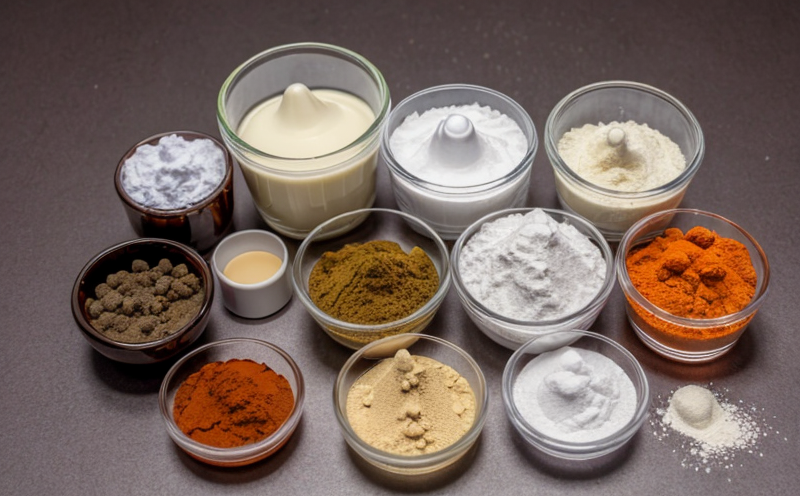Hygroscopicity Moisture Uptake Testing
Hygroscopicity moisture uptake testing is a critical analytical procedure designed to measure how much water vapor a substance can absorb under specific conditions. This test is essential in the pharmaceutical sector, particularly for excipients and formulation ingredients, as it ensures that these materials do not alter the stability of drug products or affect their efficacy.
In this context, hygroscopicity refers to the ability of a material to attract and hold water molecules from its environment. Moisture uptake testing is crucial because excessive moisture can lead to degradation, mold growth, and potential safety issues in pharmaceuticals. Understanding how much moisture a substance can absorb helps manufacturers control quality and ensure product integrity.
The test involves exposing the sample to controlled humidity levels for a specified period, then measuring the weight gain of the material post-exposure. This process is conducted under strict conditions to simulate real-world storage environments. The sample's hygroscopicity is quantified by calculating the percentage increase in moisture content after exposure.
For excipients and formulation ingredients, this test ensures that they meet regulatory requirements set forth by organizations like the FDA (US Food and Drug Administration) and other international standards such as ISO 13408-1:2017. These guidelines emphasize the importance of hygroscopicity in maintaining drug stability over extended storage periods.
The testing procedure typically involves several steps, including sample preparation, conditioning, exposure to controlled humidity, drying, and final weighing. The apparatus used for this test includes balance scales capable of detecting small increments in weight, environmental chambers that can precisely control humidity levels, and desiccators for drying the samples post-exposure.
Real-world applications highlight the significance of hygroscopicity moisture uptake testing. For instance, in the development phase of a new drug formulation, this test helps R&D engineers determine optimal storage conditions to prevent degradation due to excess moisture. In quality control processes, it ensures that suppliers meet specified criteria before materials are incorporated into formulations.
Another critical aspect is the impact on drug stability and efficacy. Excessive moisture can lead to hydrolysis reactions or microbial contamination, both of which can render a product ineffective or unsafe for use. By accurately measuring hygroscopicity, manufacturers can mitigate these risks and comply with stringent regulatory requirements.
The testing results are reported as the percentage increase in weight post-exposure, providing clear metrics that quality managers and compliance officers can use to monitor and maintain high standards of product integrity. This data is also valuable for procurement teams, ensuring they select suppliers who adhere to strict quality protocols.
Applied Standards
- ISO 13408-1:2017 – General requirements and test methods for pharmaceutical excipients
- FDA Q&A Guideline on Hygroscopicity Testing
- European Medicines Agency (EMA) Guidelines on Moisture Uptake in Excipients
Quality and Reliability Assurance
The reliability of hygroscopicity moisture uptake testing is paramount to ensure consistent results across multiple samples. This section outlines the key factors that contribute to high-quality test outcomes.
- Environmental Control: The use of environmental chambers with precise humidity control ensures accurate exposure conditions for the sample.
- Sample Preparation: Proper conditioning and drying of samples before testing are crucial to eliminate external moisture that could skew results.
- Instrumentation Accuracy: High-precision balance scales capable of detecting minute weight changes are essential for accurate measurements.
International Acceptance and Recognition
Hygroscopicity moisture uptake testing is widely recognized internationally, with its results being accepted by numerous regulatory bodies. This section highlights the acceptance of these tests across different regions.
- The US FDA accepts hygroscopicity test results as part of their quality assessment process for pharmaceutical excipients.
- European Medicines Agency (EMA) recognizes moisture uptake data in its guidelines for excipient stability studies.
- The International Pharmaceutical Excipient Council (IPEC) endorses the testing methods used, ensuring global consistency and reliability.





